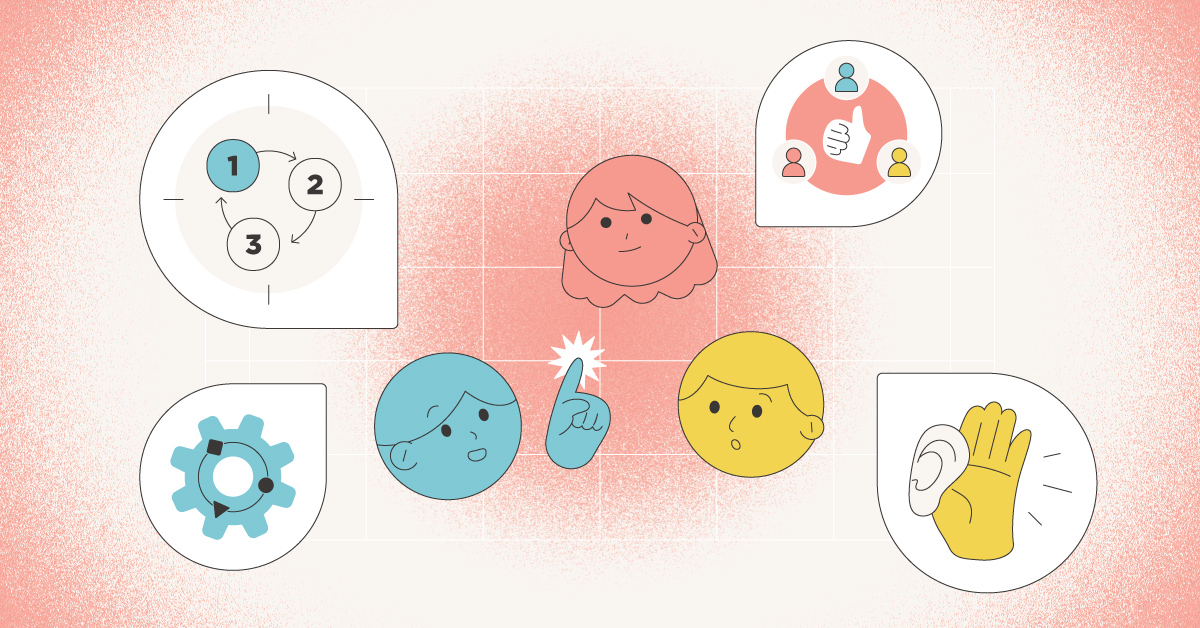
Burnout has been such a frequent topic of discussion in corporate spaces that, ironically, you might be sick of hearing about it. There’s a reason it’s top of mind; a disturbing 2022 survey by Deloitte showed that “77 percent of respondents say they have experienced employee burnout at their current job”.
When organizations notice burnout causing issues, they start asking questions. But are they asking the wrong ones?
Instead of trying to solve their structural, stress-causing issues, many companies place blame on workers — how are they failing their employers? Exactly what is their labor worth? How can the company increase productivity without increasing costs, aka the payment of and investment in their workers?
This line of questioning has led to dubbing new terms like ‘quiet quitting’, which simply describes workers completing their duties as described in their job description without going ‘above and beyond’.
If this sounds familiar, your company is asking the wrong questions! Too many organizations will take and take from their workers until they burn out entirely. That same survey also revealed that employers aren’t responding adequately when it comes to developing programs to address workplace stress.

Only focusing on profit margins eventually destroys your talent pipeline, costs more in the long run, and, most importantly, devalues the quality of life of your people. Productivity cannot be the only priority of your organization.
If you expect your workers to dedicate their lives to your business, you’re already in the wrong. You’re going to get the best work out of your people by creating a supportive, engaging environment. There are no shortcuts or hacks. It’s a seemingly simple answer with complex consequences, but it’s worth pursuing for a better, healthier workplace.
This is where a lot of articles would pivot and talk about what an individual can do to shift their internal motivation and increase it. That’s not what we’re here for. While personal development is always a good thing, fixing the issue of burnout isn’t on the worker; it’s on the organization.
The good news is that burnout isn’t a foregone conclusion! Your organization can take action now to protect employees and make a better future.
So, how can you get started?
Offer Real Benefits
Providing real, actionable benefits is the baseline requirement for a successful workplace, but you might be surprised at how many organizations overlook it.
Your workers need their bases covered to be able to fully focus on success at work — if they’re worried about paying their bills, health concerns, the wellness of their family, or finding time to spend with their loved ones, they’re going to be distracted. The days of “living to work” are over; the modern workforce is working to live and to support their lives outside of their job roles. This isn’t a bad thing! Support them in this effort to be well-rounded and you’ll see results!
You should strive to offer comprehensive healthcare, for example including maternity and paternity leave, COVID-related time off, and hybrid and remote work options. That’s not even getting into company culture and established values, which are just as important.
Ask Workers What They Need
Once you have the essentials covered, you’re still going to need to work to create a workplace suited to the unique needs of your team. The easiest way to make this happen is to ask them directly what they need from their jobs!

A great way to get this insight is to create an eNPS (employee net promoter score) survey. “eNPS is a scoring system designed to help employers measure employee satisfaction and loyalty within their organizations,” says BambooHR.
This way you can directly hear from your employees about what they want and what they need. Go out of your way to ensure that the feedback is anonymous and discourage any leadership trying to identify criticism. Honest feedback is a gift that you should appreciate!
After receiving this information, make sure to take action after; you want to show your teams that you’re taking their concerns seriously. Demonstrating a commitment to making improvements goes a long way in boosting morale.
Call In The Experts
Once you’ve identified what aspects of your organization need improvement, bring in outside resources to help with those changes. Hone in on the specifics of the feedback you received to find a starting point — start looking for patterns.
- Does your team feel stuck in their positions with no upward movement in the organization?
- Find a coach or consultant to help you build an employee development program.
- Is your organization struggling with diversity and inclusion?
- A diversity consultant can help you identify and address structural issues.
Don’t overlook concerns about diversity! CNBC reported that one out of five Gen Z survey respondents (22%) said that “their own personal experiences with racial inequalities and discrimination have influenced their career choices”, followed by quality of life, employer flexibility, and corporate social responsibility.
It’s a serious concern for the workers of the future, and the sooner your organization builds a foundation of diversity and inclusion, the better.
Use The Right Tools
You’ve covered the basics, you know what your specific team needs, and you’ve called in the pros — now it’s time to put that work into practice. While building out your development plans to increase engagement and employee satisfaction in your organization, don’t underestimate the importance of data to back your decisions.
That’s where assessments come into play. By using research-backed, scientific tools to measure and understand behavior, motivation, emotional intelligence and more, you can get to the core of what your people need with the information to make moves.
Investing in their success will pay off: 70% of staff members would be at least somewhat likely to leave their current organizations and take a job with one that is known for investing in employee development and learning, according to the Harris Poll.
Battling Burnout the Right Way
Burnout is a serious issue and if your workers aren’t well supported, you’re going to lose them. Make sure to focus your efforts on improving your organization and providing employees with the benefits, tools, and development opportunities they need to thrive.
If you’re interested in working with TTI SI, get the information you need to move forward here.




